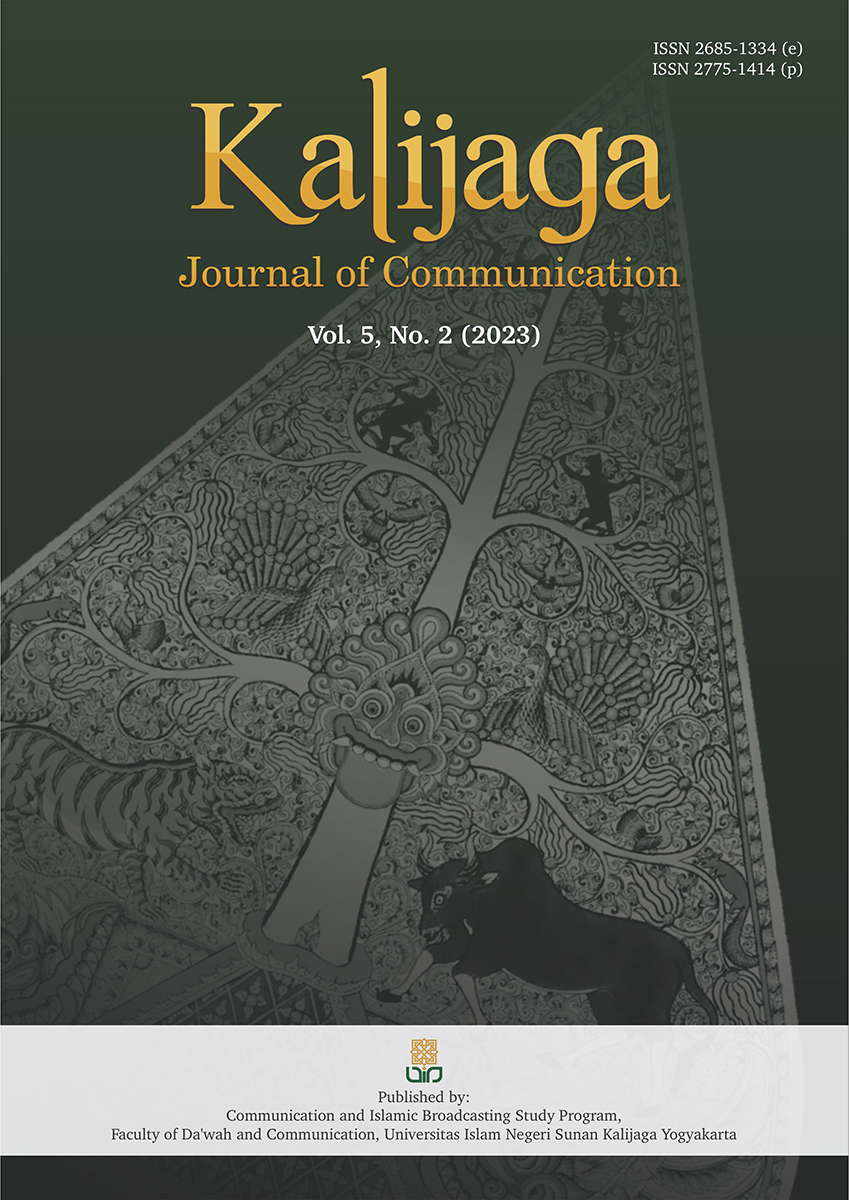Pros and Cons Comparison of Reporting on the Personal Data Protection Law in Tribunnews.com and Antaranews.com
DOI:
https://doi.org/10.14421/kjc.52.03.2023Keywords:
Framing, Personal Data Protection Law, Online Media, Tribunnews.com, Antaranews.comAbstract
This article observes the framing contained in reports of Tribunnews.com and antarnews.com regarding the ratification of Law No. 27 of 2022 concerning Perlindungan Data Pribadi or Personal Data Protection (PDP) during September 2022. This article wants to know how the framing of the PDP Law works and what forms of the frame are carried out by Tribunnews.com and Antarnews.com. The emergence of the PDP Law cannot be separated from the context of problems related to leaks of people's data, which have been occurring in Indonesia. It is alleged that the PDP Law could solve the problem of leaking people's data. However, some other people think that the PDP Law does not guarantee that data security will be realized. Using a comparative qualitative descriptive approach, this research will focus on dissecting five news stories about the PDP Law published by Tribunnews.com and antarnews.com. The news used as a data source will be analyzed using Robert N. Entman's framing analysis model, which has four analysis tools: define problems, diagnose causes, make moral judgments, and make treatment recommendations. This research shows that there is a framing of the news about the PDP Law presented by Tribunnews.com and antarnews.com. Tribunnews.com frames the news about the PDP Law by highlighting its pros and cons. Meanwhile, antarnews.com only highlights the positive or pro side of the PDP Law. antarnews.com marginalizes opinions that view the PDP Law critically and tend to be against it.
 Abstract viewed: 172 times
|
Abstract viewed: 172 times
|
 PDF downloaded = 200 times
PDF downloaded = 200 times
References
Ajhuri, K. F. (2021). Literasi Berbasis Nilai Religius. Proceeding of Conference on Strengthening Islamic Studies in The Digital Era, 1(1), Article 1.
Akbar, A. (2006). Menguasai Internet plus Pembuatan Web. M2S.
Antaranews.com. (2022). Sejarah Singkat: ANTARA. https://korporat.antaranews.com/tentang/sejarah-singkat
Binekasri, R. (2022). Siapakah Bjorka, Hacker yang Bikin Pemerintah RI Ketar Ketir? https://www.cnbcindonesia.com/news/20220911063631-4-371044/siapakah-bjorka-hacker-yang-bikin-pemerintah-ri-ketar-ketir#:~:text=Bjorka%20adalah%20hacker%20yang%20diduga,Komunikasi%20dan%20Informatika%20(Kominfo).
Bungin, B. (2008). Konstruksi Sosial Media Massa: Kekuatan Pengaruh Media Massa, Iklan Televisi dan Keputusan Konsumen serta Kritik Terhadap Peter L. Berger & Thomas Luckmann. Kencana.
Entman, R. M. (1993). Framing: Toward Clarification of a Fractured Paradigm. Journal of Communication, 43(4), 51–58. https://doi.org/10.1111/j.1460-2466.1993.tb01304.x
Eriyanto. (2002). Analisis Framing: Konstruksi, Ideologi, dan Politik Media. LKiS.
Haryanto, I. (2014). Jurnalisme Era Digital: Tantangan Industri Media Abad 21. Buku Kompas.
Hasan, M. I. (2002). Pokok-Pokok Materi Metodologi Penelitian & Aplikasinya. Ghalia Indonesia.
Jannah, M.Si, DR. L. M. (2022, September 21). UU Perlindungan Data Pribadi dan Tantangan Implementasinya. https://fia.ui.ac.id/uu-perlindungan-data-pribadi-dan-tantangan-implementasinya/
Junaiyah, H. M. (2010). Keutuhan Wacana. Jakarta Gramedia Widiasarana Indonesia.
KBBI. (2023). Berita. https://kbbi.kemdikbud.go.id/entri/berita
Meiranti, M. (2020). Bingkai “Tampang Boyolali “ dalam Pidato Prabowo Subianto di Media Daring. Kalijaga Journal of Communication, Volume 2 No 1. https://doi.org/10.14421/kjc.21.06.2020
Moleong, L. J. (2009). Metodologi Penelitian Kualitatif/Lexy J. Moleong. PT. Remaja Rosdakarya.
Purnama, T. D., & Alhakim, A. (2021). Pentingnya UU Perlindungan Data Pribadi sebagai Bentuk Perlindungan Hukum terhadap Privasi di Indonesia. Jurnal Komunitas Yustisia, 4(3), Article 3. https://doi.org/10.23887/jatayu.v4i3.44370
Pusiknas Polri. (2022). Kejahatan Siber di Indonesia Naik Berkali-kali Lipat. https://pusiknas.polri.go.id/detail_artikel/kejahatan_siber_di_indonesia_naik_berkali-kali_lipat
Reuters, I. (2023). Digital News Report 2023. Reuters Institute for the Study of Journalism.
Sobur, A. (2012). Analisis Teks Media: Suatu Pengantar untuk Analisis Wacana, Analisis Semiotik, dan Analisis Framing. PT. Remaja Rosdakarya.
Sugiono. (2008). Metode Penelitian Kuantitatif, Kualitatif, dan R&D. Alfabeta.
Sumadiria, A. H. (2010). Jurnalistik Indonesia: Menulis Berita dan Feature. Simbiosa Rekatama Media.
Tribunnews.com. (2022). Redaksi. Tribunnews.com. https://www.tribunnews.com/redaksi
We Are Social. (2023). The Changing World of Digital in 2023. https://wearesocial.com/id/blog/2023/01/the-changing-world-of-digital-in-2023-2/
Downloads
Published
Issue
Section
License
Copyright (c) 2023 Defi Susanti, Kayyis Fithri Ajhuri

This work is licensed under a Creative Commons Attribution-NonCommercial-ShareAlike 4.0 International License.
Authors who publish with this journal agree to the following terms:
- Authors retain copyright and grant the journal right of first publication with the work simultaneously licensed under a Creative Commons Attribution-NonCommercial-ShareAlike 4.0 International License. that allows others to share and adapt the work with an acknowledgement of the work's authorship and initial publication in this journal.
- Authors are able to enter into separate, additional contractual arrangements for the non-exclusive distribution of the journal's published version of the work (e.g., post it to an institutional repository or publish it in a book), with an acknowledgement of its initial publication in this journal.
- Authors are permitted and encouraged to post their work online (e.g., in institutional repositories or on their website) prior to and during the submission process, as it can lead to productive exchanges, as well as earlier and greater citation of published work (See The Effect of Open Access).






























